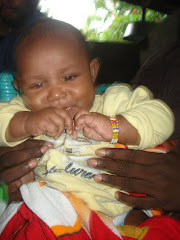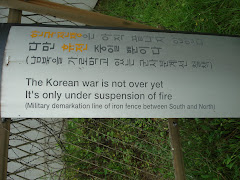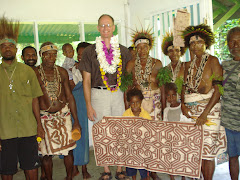
Packing my bags (again! dear God give me strength) Damian gave me a ride to our large friary in Alnmouth, home to Edward, Paschal, Maximilian and Augustine Thomas. The building was built in the early 20th Century as a private home. But after the Second World War it was sold to an entrepreneur who turned it into a nightclub. Much of the elegant finish work was removed from the rooms on the main floor to create a large bar and dance floor. But in time these pleasures palled and the place was abandoned. It was several years later that the brothers came across the building, home to mice and other wildlife, leaking and generally a mess: a new home! they thought. And so it became one after a tremendous amount of hard work (and the generosity of the Duke of Northumberland who purchased the building and gave it to the brothers and took care of some of the most pressing repairs--the joys of an aristocratic society, as Brother Edward observed.) Today Alnmouth friary is beautiful, the result of almost 50 years of loving care by many generations of brothers. The chapel is where the bar and dance floor was, with a mesmerizing view of the sea. Br. Edward was one of the original brothers and still greets visitors with grace and charm. The three younger brothers work like fiends, and I joined in with the cleaning: familiar routines at last. A different country, but in many ways I felt I was back at Little Portion on Long Island. though thinking that made me feel very homesick, so I tried not to make too many comparisons. My visit coincided with a group from Scotland; I met a woman from Lockerbie. The Franciscan hospitality was generous and the sense of peace and serenity I knew to be created by tremendous effort behind the scenes. When people comment how peaceful Little Portion is for them I fight to temptation to say: "You're kidding!"
I was able to go for some truly marvelous and inspiring runs along the beach, and one day, through the hills and sheep pastures. The hospitality was an incarnation of the prayer; we gathered with joy at the two tables: the Altar and the dining room table. I had a nourishing visit to Alnmouth Friary.
My next visit was at the other end of England, on the south coast in Dorset.

Here Society of St. Francis has St. Francis Friary at Hilfield. Here Donald Luke offers the welcome. The building used to be the hunting lodge for the Earl of Sandwich. Later it became a school. Finally it was given to the brothers for a friary. In years past the friary has been home to over twenty brothers at a time, plus numerous homeless men ('Wayfarers' they are called in England) who lived with the brothers. I was very impressed by the enormous Franciscan history of the place; the ministry reflecting a tremendous adaptability and openness to the needs of people at a particular time. Presently it is in another time of innovation. With declining numbers among the brothers in the province, it is home to only 10 brothers. Yet their ministry is becoming more and more focussed on the environment. Under the leadership of the Minister Provincial, Brother Samuel, "The Hilfield Project" is beginning to provide creative leadership in the Church of England (and secularly too). The Project attracts many young people who come to live as volunteers for a few months (some stay longer) working on the land, talking with visitors, and honing their own knowledge and skills as environmentalists. For people interested in living in harmony with the earth, finding new ways to live, Hilfield offers some practical opportunities for re-learning some old English rural skills as well: laying hedges and coppicing are two colorful terms I only dimly understand.

The brothers and volunteers are aggressively "green" in their lifestyle, not using a tumble dryer, and washing clothes with some kind of plastic ball filled with some kind of pebbles which "ionize" the water and make the clothes clean without using detergent: it worked well enough for me!
A highlight of the visit to Hilfield was being present for Br. John's ordination to the Diaconate. Here he is with our Bishop Protector Bishop Michael Perham.
We celebrated Christmas while I was at Hilfield, the great feast adored by St. Francis, and a time for Franciscan excess in decorating and a huge dinner. We collected branches, moss, and pine cones for Chantal ,a volunteer from Switzerland , to make into stunning decorations. Small slugs emerging from the moss star decorations were a special imprimatur of authenticity.

Br. Sam took me and the other American brother living there at this time, Br. Donald Luke, on a terrific visit to Glastonbury and Wells Cathedral on the Sunday after Christmas. Br. Benedict made sure I got to see and admire the Cerne Abbas giant.
From Hilfield I went east to Canterbury. Here the brothers live at Greyfriars. Their chapel is a Twelfth Century building built over a stream. The building was standing when the first Franciscans came to Canterbury in 1220 or there abouts: during St. Francis' lifetime at any rate. Br. Austin has just been appointed the Master of the old Eastbridge "hospital" a medieval almshouse, housing 8 poor people. It is the classiest subsidized housing I've ever seen. Yet the patina of age and Anglican respectability don't dilute this wonderful Franciscan ministry of caring for and living with the poor. This friary is also one of the houses of learning in our world-wide order, with brothers and sisters from around the world coming to stay there and study at the Franciscan Study Center which is located just outside town up on a hill. Br. Colin Wilfred works there one day a week.

Br. Reginald, suffering at present from a broken arm, spend time at the great cathedral, praying with people, helping out where he can. Canterbury is still very much a place of pilgrimage and the brothers are called on to help out with pilgrims and various ministries throughout the city parishes. It is a very busy place. Here from left to right, Reginald, Martin John ( a brother come to study), Austin, Colin Wilfred, and Christopher John, another brother scholar visiting from The Australia New Zealand Province.
Finally January 9 I traveled by bus back to London.
And got back to Little Portion Friary on Long Island very tired but inspired by all that I had seen and experienced.
 This past weekend , on Saturday, I had the opportunity to work with a parish on the theme "Expanding our Spiritual Boundaries." Sunday I was the preacher, and the text was Jesus' call of his disciples. We heard in the Scriptures how the men left their boats, their families, and followed Jesus. They expanded their boundaries. How do we expand our boundaries and respond to the call of Jesus in our day? I can think of three ways, and I could probably think of more. First, seek go be in relationship with people. As my friend Bishop Cathy Roskam, suffragan bishop of New York says: "relationship is converting." People find it harder to dismiss other people with whom they have a personal relationship. And the more people we know, the more complex our understanding of the world. Friendships were the basis for Jesus' ministry; he became friends with the prostitutes and tax collectors. It is clear to me that we are called to to friendship outside our comfort zone and these relationships wil open up new opportunities for serving Christ in all persons.
This past weekend , on Saturday, I had the opportunity to work with a parish on the theme "Expanding our Spiritual Boundaries." Sunday I was the preacher, and the text was Jesus' call of his disciples. We heard in the Scriptures how the men left their boats, their families, and followed Jesus. They expanded their boundaries. How do we expand our boundaries and respond to the call of Jesus in our day? I can think of three ways, and I could probably think of more. First, seek go be in relationship with people. As my friend Bishop Cathy Roskam, suffragan bishop of New York says: "relationship is converting." People find it harder to dismiss other people with whom they have a personal relationship. And the more people we know, the more complex our understanding of the world. Friendships were the basis for Jesus' ministry; he became friends with the prostitutes and tax collectors. It is clear to me that we are called to to friendship outside our comfort zone and these relationships wil open up new opportunities for serving Christ in all persons. I am a great believer in reading any and everything I can get my hands on, and reading helps us to test our categories, can challenge our assumptions and provide new framework for on-going reflection on our experiences. It isn't cheating to read what other people think about the Scriptures, or social concerns or relationships!
I am a great believer in reading any and everything I can get my hands on, and reading helps us to test our categories, can challenge our assumptions and provide new framework for on-going reflection on our experiences. It isn't cheating to read what other people think about the Scriptures, or social concerns or relationships!
















